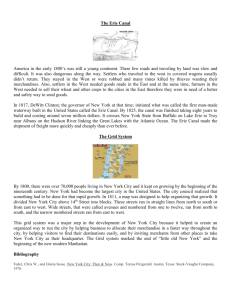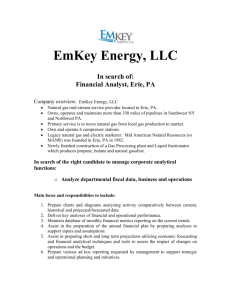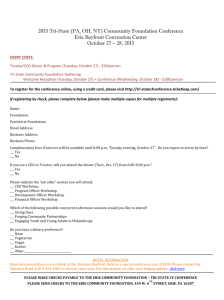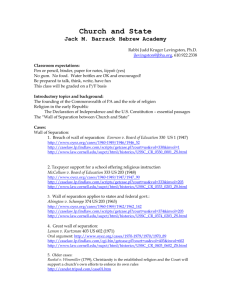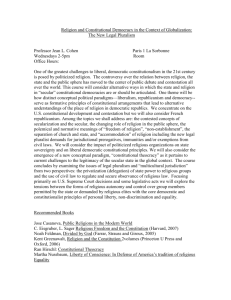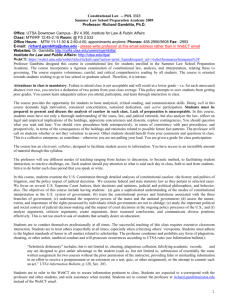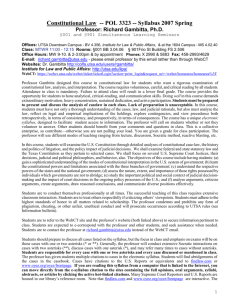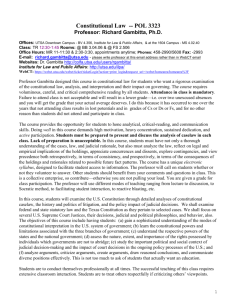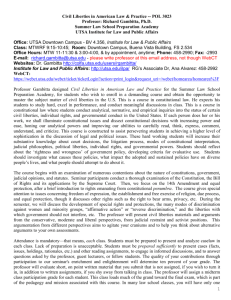Erie RR and the UCC
advertisement
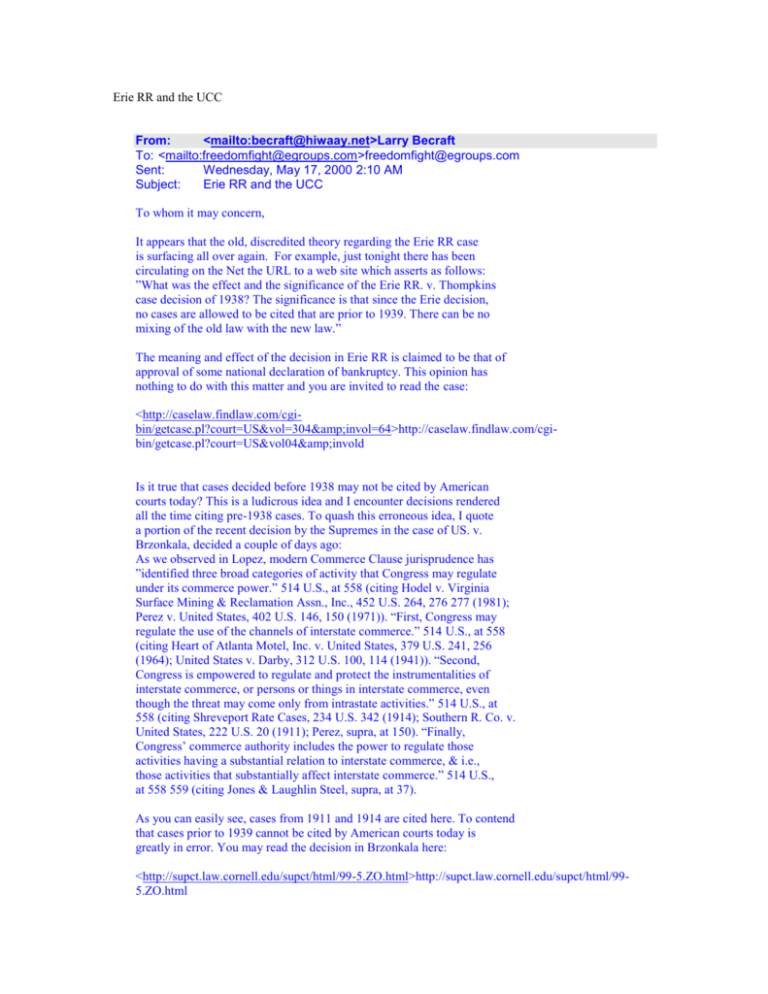
Erie RR and the UCC From: <mailto:becraft@hiwaay.net>Larry Becraft To: <mailto:freedomfight@egroups.com>freedomfight@egroups.com Sent: Wednesday, May 17, 2000 2:10 AM Subject: Erie RR and the UCC To whom it may concern, It appears that the old, discredited theory regarding the Erie RR case is surfacing all over again. For example, just tonight there has been circulating on the Net the URL to a web site which asserts as follows: ”What was the effect and the significance of the Erie RR. v. Thompkins case decision of 1938? The significance is that since the Erie decision, no cases are allowed to be cited that are prior to 1939. There can be no mixing of the old law with the new law.” The meaning and effect of the decision in Erie RR is claimed to be that of approval of some national declaration of bankruptcy. This opinion has nothing to do with this matter and you are invited to read the case: <http://caselaw.findlaw.com/cgibin/getcase.pl?court=US&vol=304&amp;invol=64>http://caselaw.findlaw.com/cgibin/getcase.pl?court=US&vol04&amp;invold Is it true that cases decided before 1938 may not be cited by American courts today? This is a ludicrous idea and I encounter decisions rendered all the time citing pre-1938 cases. To quash this erroneous idea, I quote a portion of the recent decision by the Supremes in the case of US. v. Brzonkala, decided a couple of days ago: As we observed in Lopez, modern Commerce Clause jurisprudence has ”identified three broad categories of activity that Congress may regulate under its commerce power.” 514 U.S., at 558 (citing Hodel v. Virginia Surface Mining & Reclamation Assn., Inc., 452 U.S. 264, 276 277 (1981); Perez v. United States, 402 U.S. 146, 150 (1971)). “First, Congress may regulate the use of the channels of interstate commerce.” 514 U.S., at 558 (citing Heart of Atlanta Motel, Inc. v. United States, 379 U.S. 241, 256 (1964); United States v. Darby, 312 U.S. 100, 114 (1941)). “Second, Congress is empowered to regulate and protect the instrumentalities of interstate commerce, or persons or things in interstate commerce, even though the threat may come only from intrastate activities.” 514 U.S., at 558 (citing Shreveport Rate Cases, 234 U.S. 342 (1914); Southern R. Co. v. United States, 222 U.S. 20 (1911); Perez, supra, at 150). “Finally, Congress’ commerce authority includes the power to regulate those activities having a substantial relation to interstate commerce, & i.e., those activities that substantially affect interstate commerce.” 514 U.S., at 558 559 (citing Jones & Laughlin Steel, supra, at 37). As you can easily see, cases from 1911 and 1914 are cited here. To contend that cases prior to 1939 cannot be cited by American courts today is greatly in error. You may read the decision in Brzonkala here: <http://supct.law.cornell.edu/supct/html/99-5.ZO.html>http://supct.law.cornell.edu/supct/html/995.ZO.html The same web site asserts that the Erie RR case was needed to set up the national bankruptcy, which included the states. This is rather remarkable, because just 2 years before the 1938 Erie RR case, the Supremes decided the case of Ashton v. Cameron County Water Improvement Dist., 298 U.S. 513, 56 S.Ct. 892 (1936), which held that State governments and their political subdivisions can’t use bankruptcy. You may read that case here: <http://caselaw.findlaw.com/scripts/getcase.pl?navby=case&court=us&amp;vol=298&amp;page=513 >http://caselaw.findlaw.com/scripts/getcase.pl?navbyÊse&court=us&amp;vol)8&amp;pageQ3 This idea regarding “national bankruptcy” and the UCC being the foundation for everything legal today has been around for at least 10 years. Not only is it incorrect, it has also been litigated in the following cases: 1. Jones v. City of Little Rock, 314 Ark. 383, 862 S.W.2d 273, 274 (1993)(In reference to traffic tickets, the court stated, “The Uniform Commercial Code does not apply to any of these offenses”) 2. United States v. Stoecklin, 848 F.Supp. 1521 (M.D. Fla. 1994) 3. Barcroft v. State, 881 S.W.2d 838, 840 (Tex.App. 1994)(“First, the UCC is not applicable to criminal proceedings; it applies to commercial transactions”) 4. United States v. Greenstreet, 912 F.Supp. 224 (N.D.Tex. 1996)(also raised flag and common law court issues) 5. United States v. Andra, 923 F.Supp. 157 (D.Idaho 1996)(“The complaint filed by the plaintiff is not a negotiable instrument and the Uniform Commercial Code is inapplicable”) 6. Watts v. IRS, 925 F.Supp. 271, 276 (D.N.J. 1996)(“The IRS’s Notice of Intent to Levy is not a negotiable instrument”) 7. United States v. Klimek, 952 F.Supp. 1100 (E.D.Pa. 1997)(returning lawsuit complaint marked “Refusal For Cause Without Dishonor UCC 3-501” and refusing other court pleadings “for fraud” based upon UCC argument got nowhere; also raised nom de guerre and flag issues) 8. City of Kansas City v. Hayward, 954 SW2d 399 (Mo.App. W.D. 1997). Of course, you are within your rights to believe this legal theory. But I am also within my rights when I state that it is predictable that this theory will be rejected by the courts: not because of some conspiracy, but because the theory is wrong. Please remember, there are lots of erroneous legal arguments found on the Net. This theory regarding the UCC is one of them and constitutes nothing but legal “science fiction.” Larry Becraft Get paid for the stuff you know! Get answers for the stuff you don’t. And get $10 to spend on the site! http://click.egroups.com/1/2200/2/_/19987/_/958557052/



